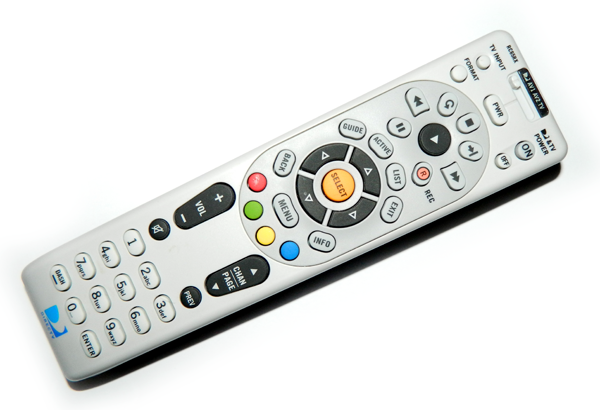The infrared remote is the workhorse of the home theater world. Not as sexy as RF remotes or IP (internet-based) remotes, they’re nonetheless the standard. Regardless of what advanced features come with a TV, streaming box, or audio receiver, they generally will accept inputs from a plain old IR remote if you want them to. Infrared remotes are cheap to make, there are plenty of “universal” models out there, and they work well enough that most folks don’t need anything else.
But how do IR remotes work?
When people hear “infrared” they tend to think “heat.” That’s not technically far off, but infrared radiation simply refers to radiation at frequencies slightly longer than red light. This sort of radiation has a tendency to excite molecules it comes in contact with, and that creates heat, but that’s not the point of this article. When it comes to infrared remotes, the whole point is that it’s a form of radiation that’s invisible, cheap to create, and relatively similar to visible light in the way it works.
The key component of an infrared remote is an infrared LED. “LED” is a bit of a misused term here since it’s emitting infrared radiation, not light. It should properly be called an “IRED” but no one calls it that. Some remotes have one IR LED and others have two. The number of LEDs, and their “brightness,” will determine how effective the remote is. LEDs are used for several reasons. First of all, they are extremely efficient and long-lasting, which is important for a battery-powered device. Second, they can be tuned to put out a very narrow range of frequencies, meaning their emissions can be both invisible and harmless. The amount of radiation is so low that there is no noticeable heat generation.
Of course the other part of the system is the IR receiver. This is a very simple sensor much like a solar cell. If it receives IR radiation in a particular band, it generates a tiny current. By combining transmitter and receiver, information can be passed wirelessly from point to point.
What sort of information is passed along?
One of the best (and worst) parts about infrared remotes is that there really isn’t a lot of standardization. Every manufacturer is free to use their own systems. The only requirement is that the frequency and wavelength are relatively common. Most remote control systems use a wavelength of about 960nm and flash about 38,000 times per second as a base. By using a flashing light, it’s possible for the sensor to ignore infrared radiation in the area that has nothing to do with the remote.
Beyond that, remote manufacturers are free to use whatever system they want to transmit codes. As a general rule, an infrared signal will consist of several parts: a start code which tells the receiver to listen, a manufacturer code so that the device knows you’re talking to it, a control code, and a stop code. However, the way these are implemented is different from manufacturer to manufacturer.
IR codes are sent as binary, in other words a series of on and off signals. Some manufacturers will make the “on” a longer signal than the “off,” while others will vary the space between codes. It’s up to them.
When your device receives an infrared signal, it first decides if you are trying to control it or something else. If you’re trying to control it, then it listens for what you are trying to control. The whole process happens constantly, over and over.
How do universal remotes work?
Universal remotes are based on decades of data gathering from hundreds of different manufacturers. The codes from different manufacturers are stored on a chip, and when you program your remote, it pulls the ones from the right manufacturer.
Different devices know not to interfere with each other, since the manufacturer codes and the way the code is set up varies. However, if you have two devices from the same manufacturer, they will both respond to the infrared signal.
The plusses and minuses of infrared remotes
Infrared remote control technology is mature and cheap. The LEDs are very inexpensive and the remote itself doesn’t require FCC approval the same way as a Bluetooth, RF, or IP remote would. It’s a simple, reliable technology. However, infrared remotes are generally not very powerful, with a typical range of under 25 feet. Infrared radiation doesn’t go through walls or doors, so you have to aim carefully.
Other forms of remote can be much more complex. IP remote systems can be integrated into apps so you get a lot more control and flexibility. RF systems can work through solid objects. Both IP and RF, not to mention Bluetooth, can incorporate device ID information so that each remote only controls a single device. But, regardless of all this power, it’s the humble IR remote that saves the day more often than not.
If you’re looking for an IR remote or anything else to help you live your best digital life, shop at Solid Signal! If you have questions, call us at 888-233-7563!





